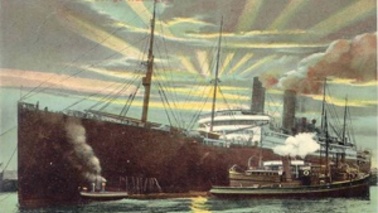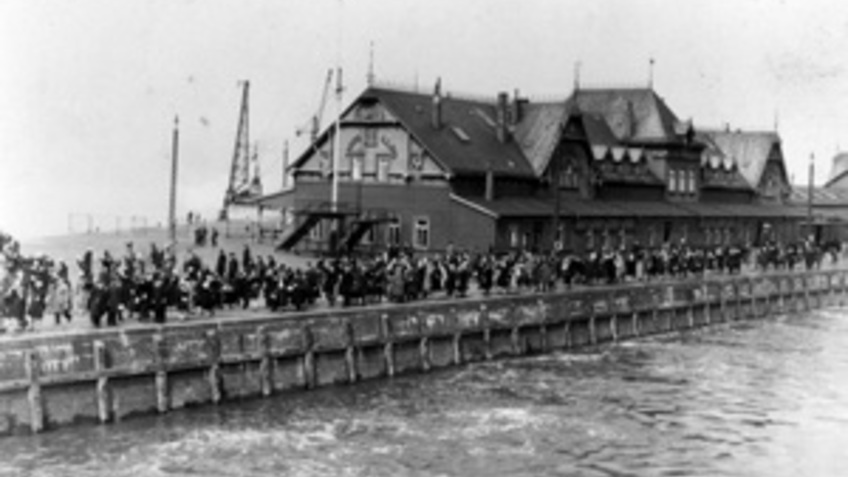
Lloyd Hall
The construction of this building, inaugurated on September 20th 1897 is closely connected with the construction of Kaiserhäfen basins I-III (1872 to 1909) and, of course, with the adjacent giant Kaiserschleuse lock, the latter being completed at the same time as the Lloyd Hall. This lock enabled the Bremerhaven ports to be used by the largest steamers of that age, which were owned by North German Lloyd. These extension works convinced the powerful and influential shipping company to move their transatlantic facilities back to Bremerhaven from Nordenham, where they had been since 1890.
But the servicing of larger numbers of passengers also made an extension of the facilities necessary and this led to the construction of the Lloyd Hall, situated on the western entrance to Kaiserschleuse lock, off the dyke. An older hall on the southwest part of Neuer Hafen (1869/70) originally served that purpose, but it now fell into disuse.
The new Lloyd Hall was designed by the Geestemünde architect and constructor Bernhard Scheller. It consisted of a number of waiting rooms, customs facilities, a baggage store, a telegraph station and a railway station with covered roof. The whole facility was mainly used by first class passengers, who were transported after check-in by tenders to the passenger steamers anchored on Bremerhaven roads. The emigrants of the lower classes however boarded when she ships were still berthed at the Kaiserhafen III basin.
But besides the regular transatlantic services which the Lloyd Hall had been built for, this building was also the stage for a historical event on July 27th 1900. When the German expeditionary forces to China were embarking there after the assassination of the German ambassador to Peking, Kaiser Wilhelm II held a bloodthirsty address in which he called for revenge. Many contemporaries regarded that as a painful incident indeed.
When the new Columbus terminal came into service in 1928, the Lloyd Hall was no longer as important as in its heyday before 1914. It was destroyed by massive bombing in 1944.


